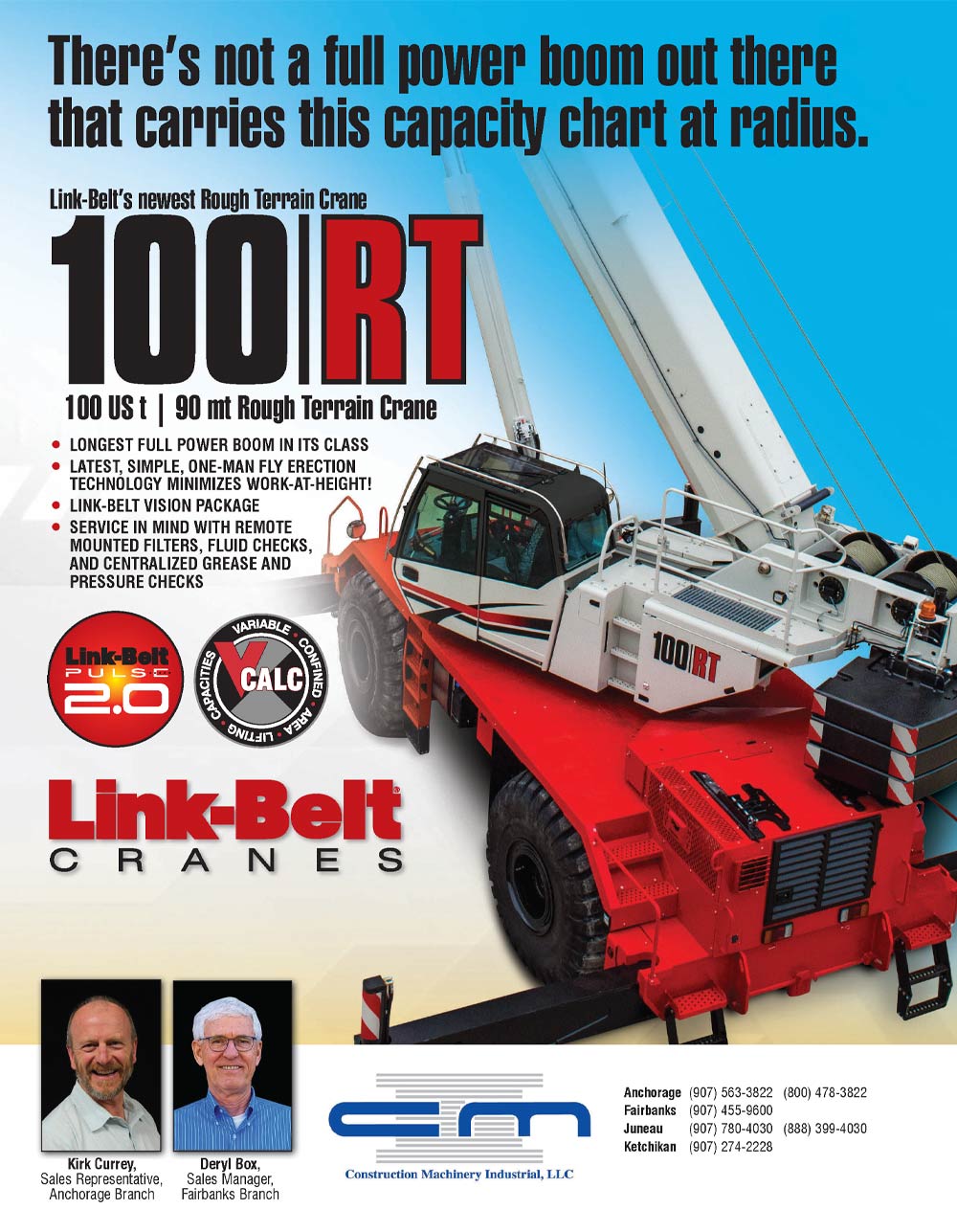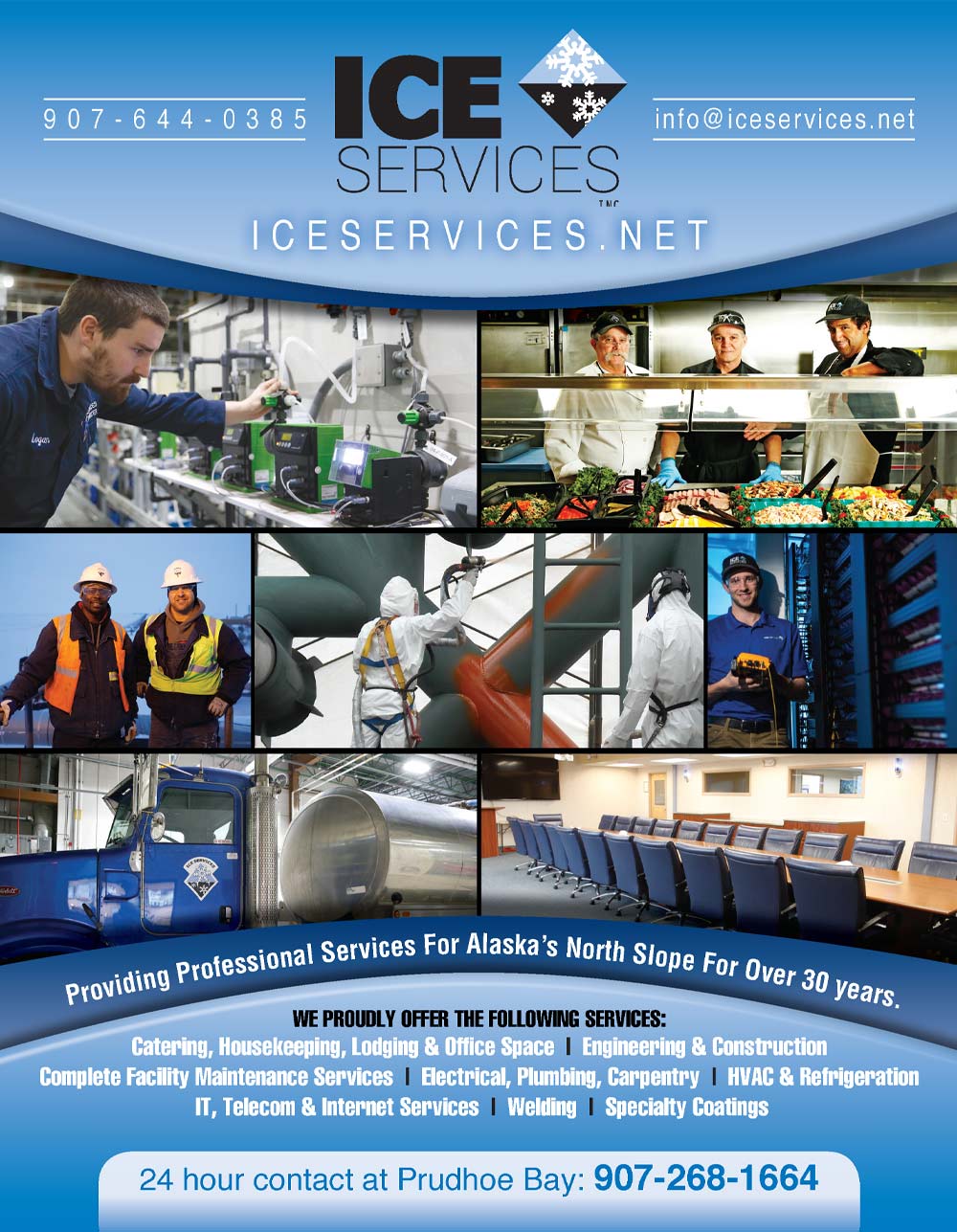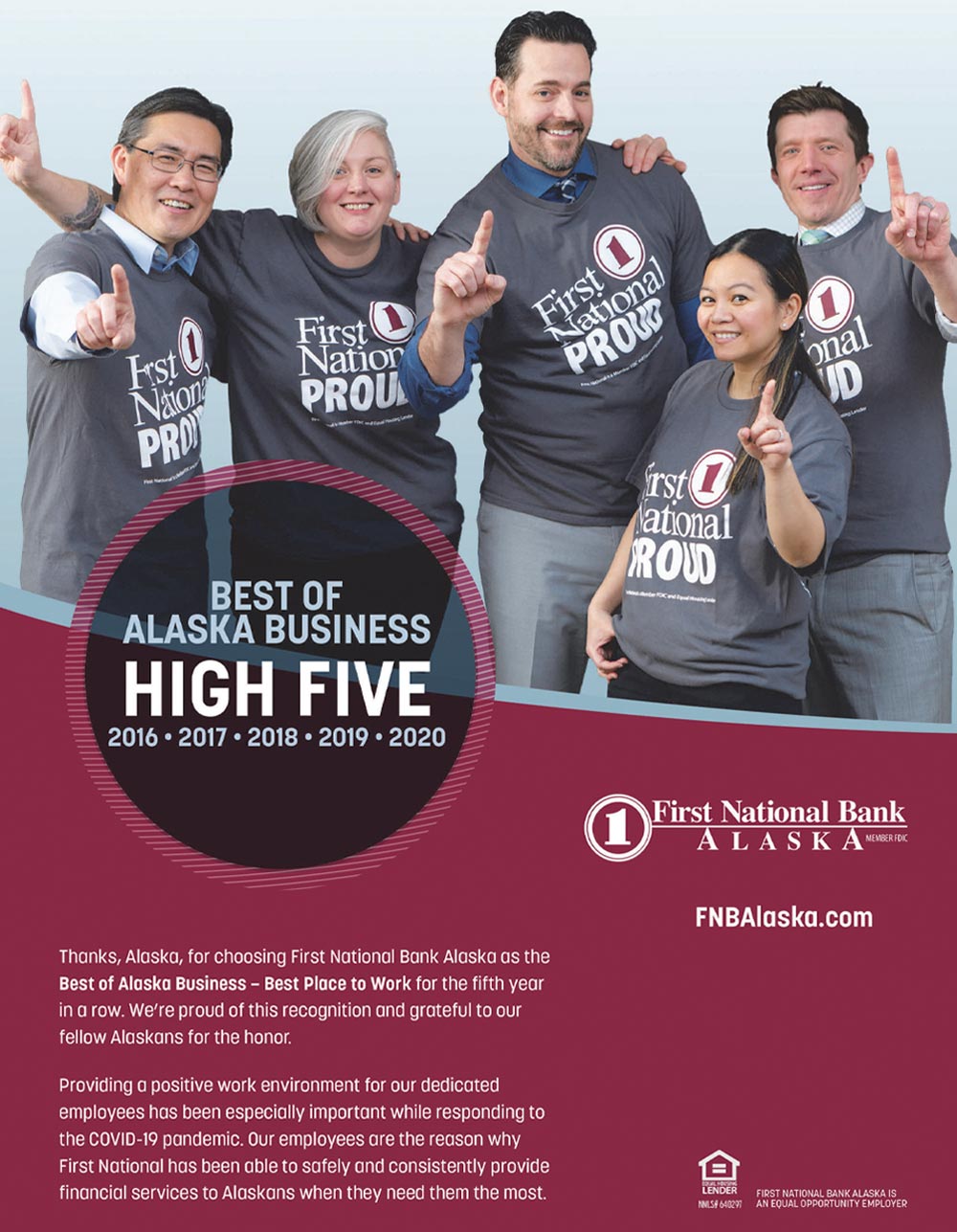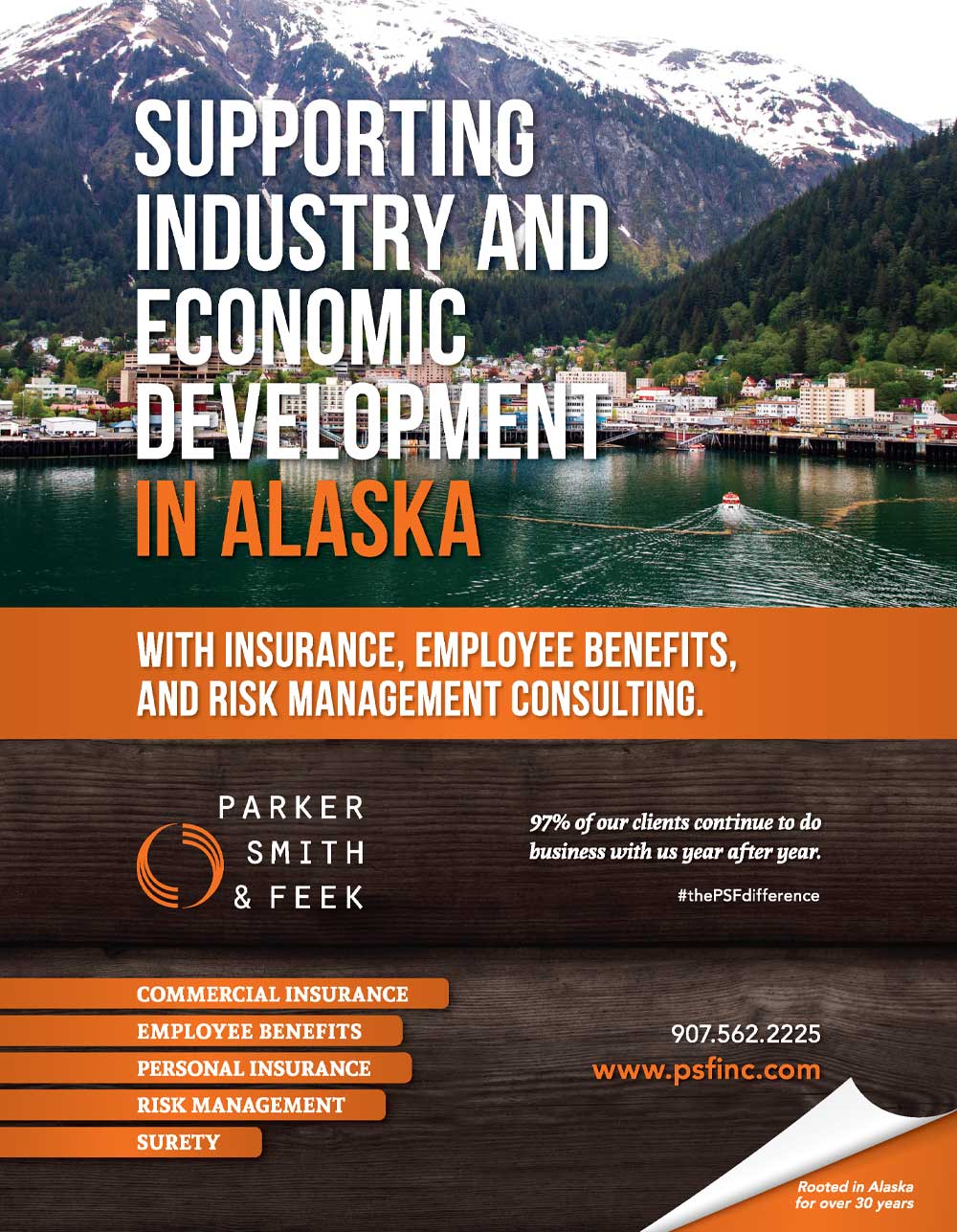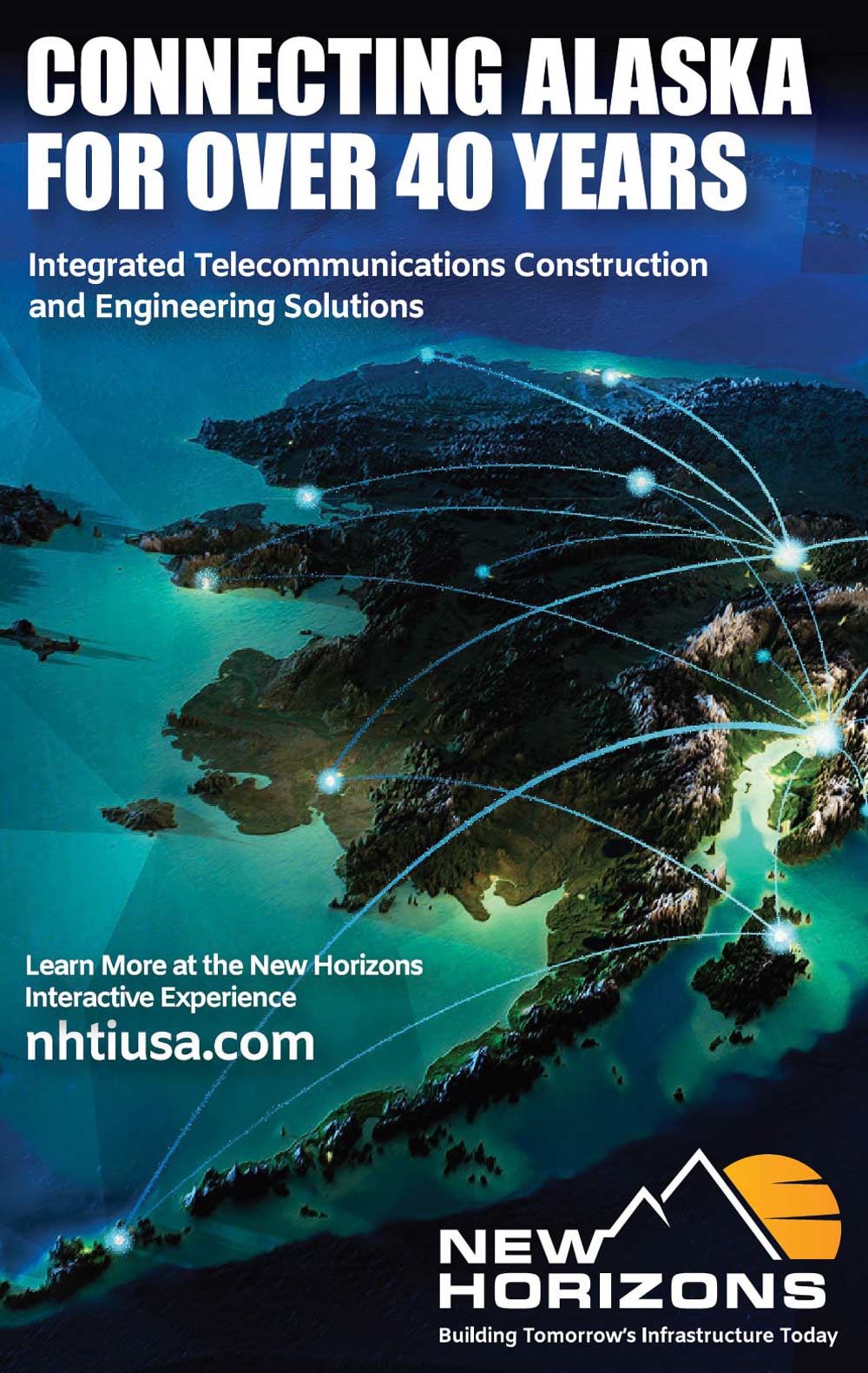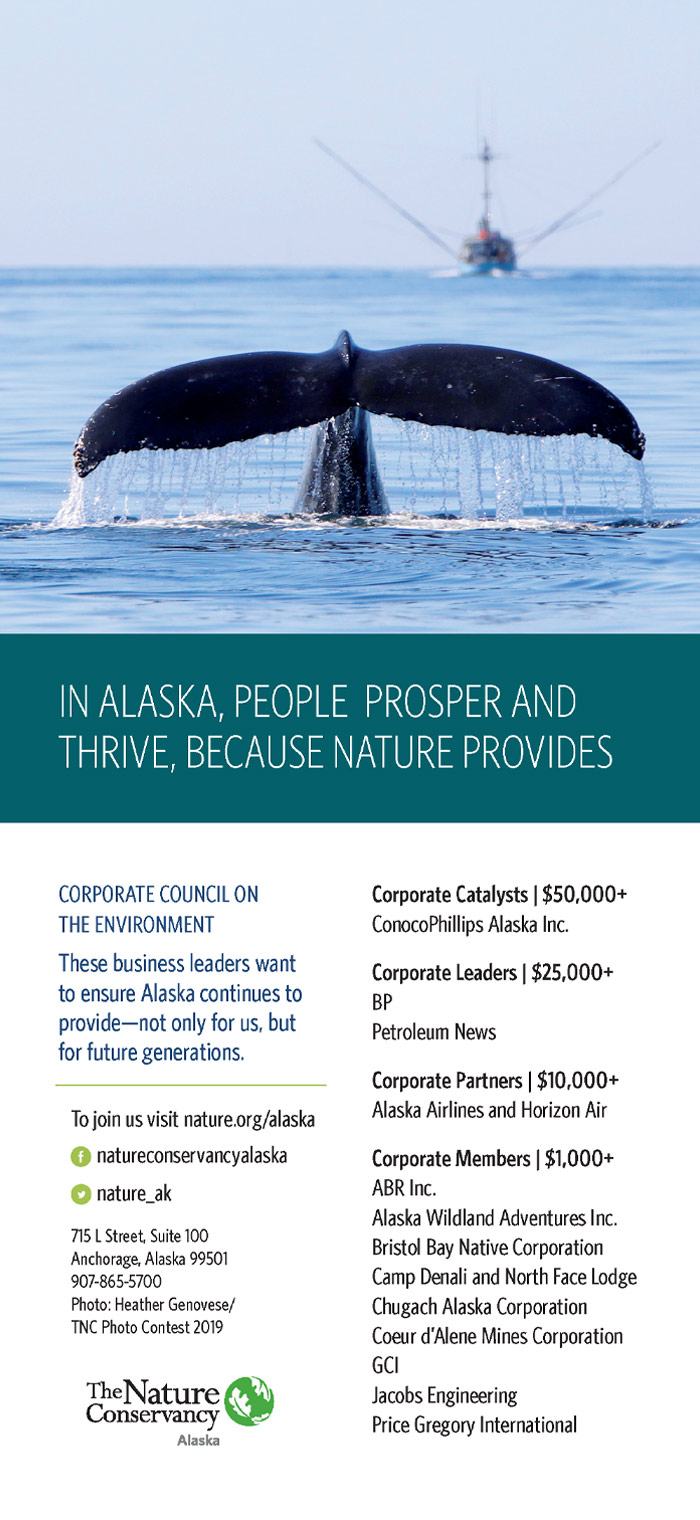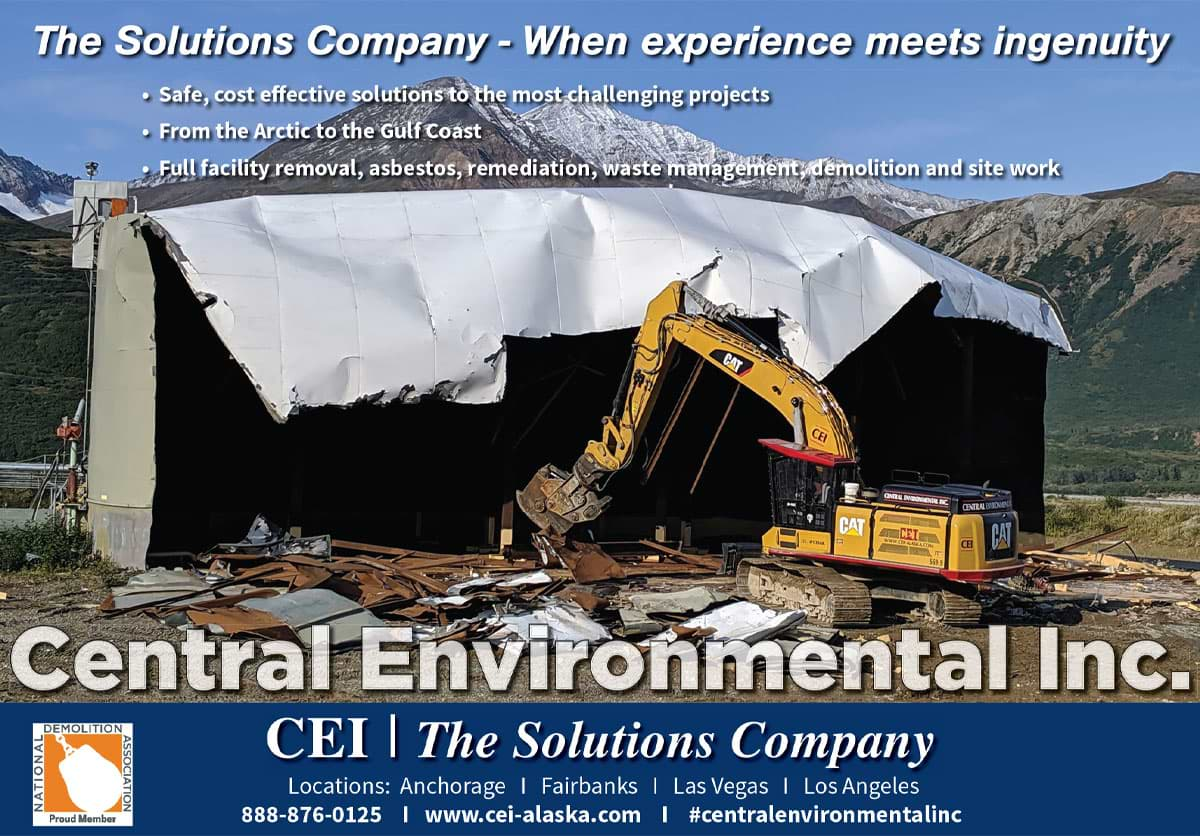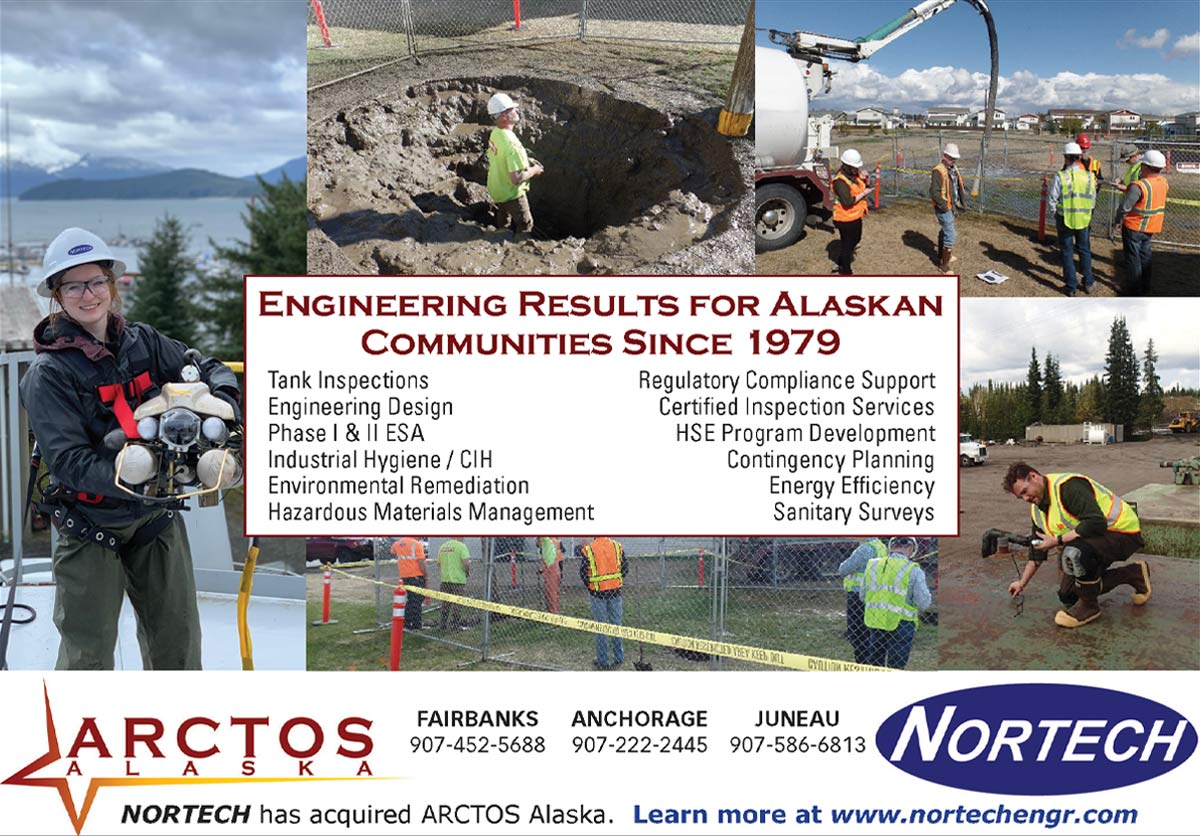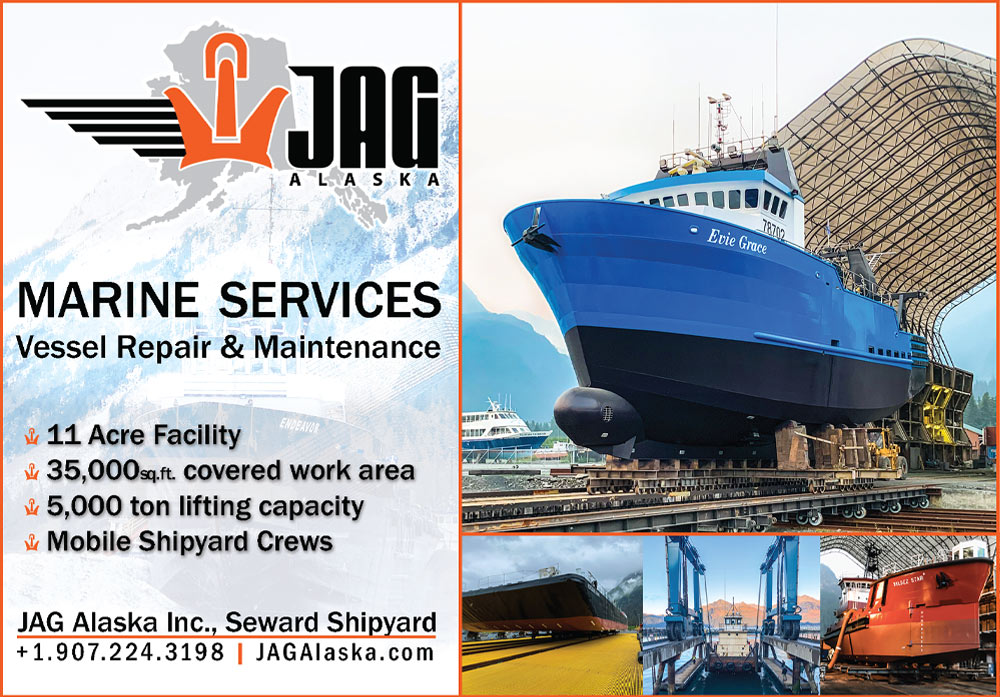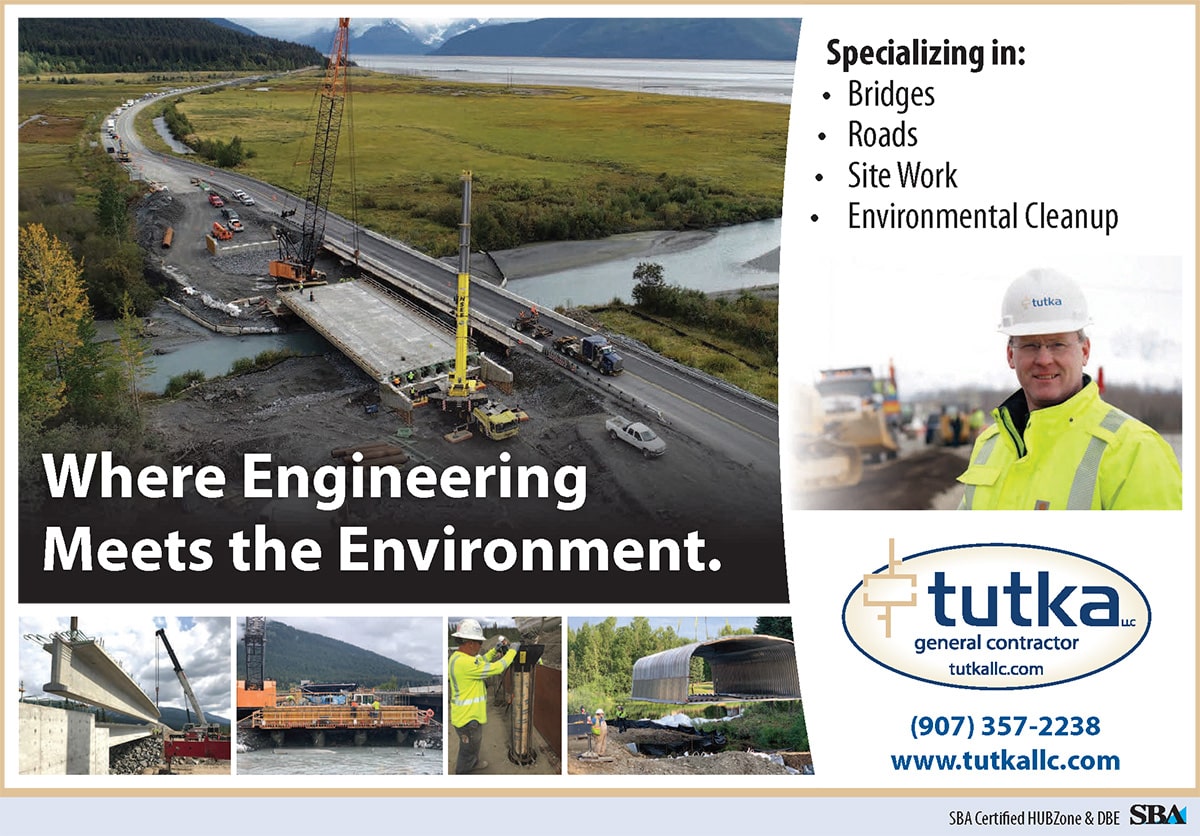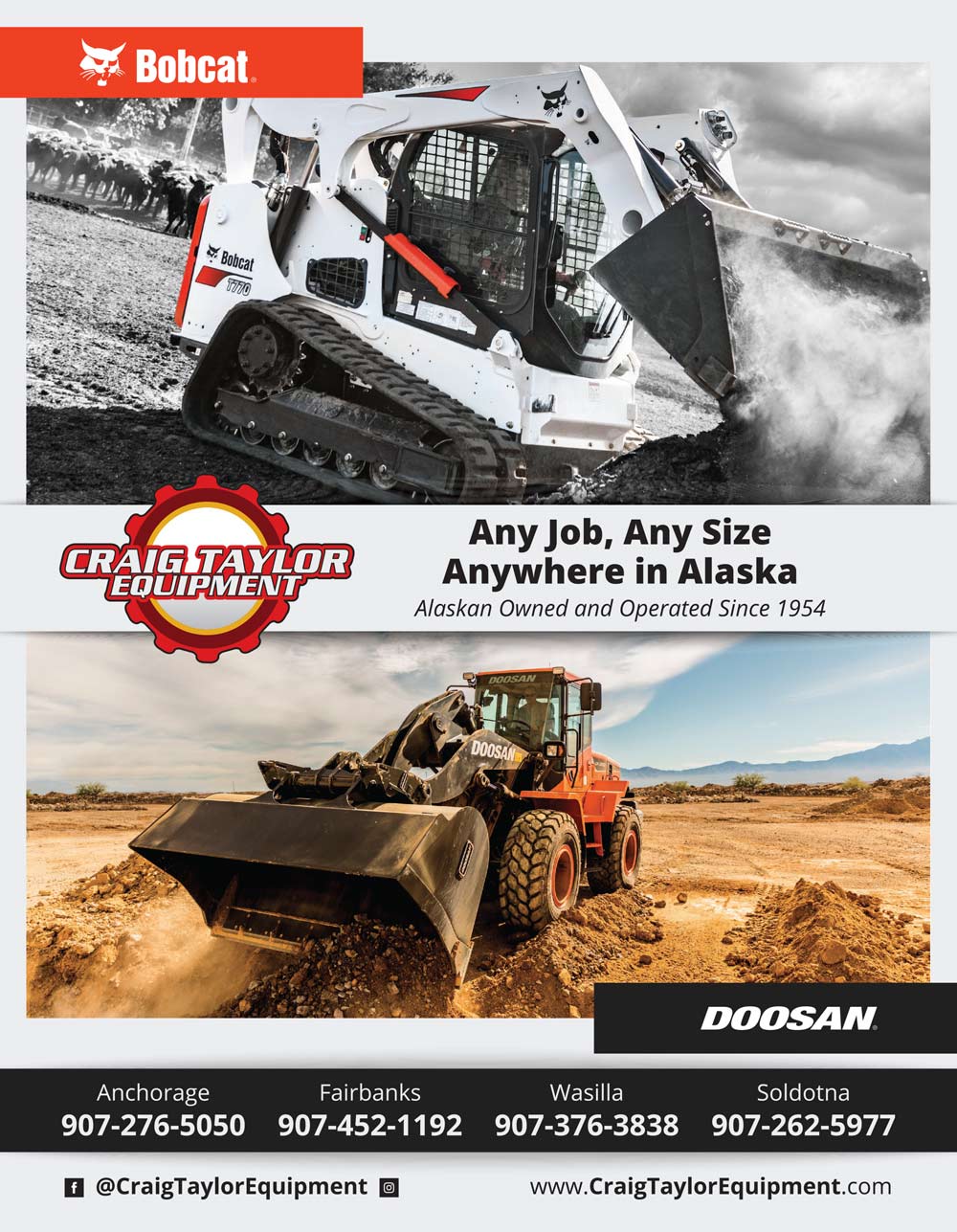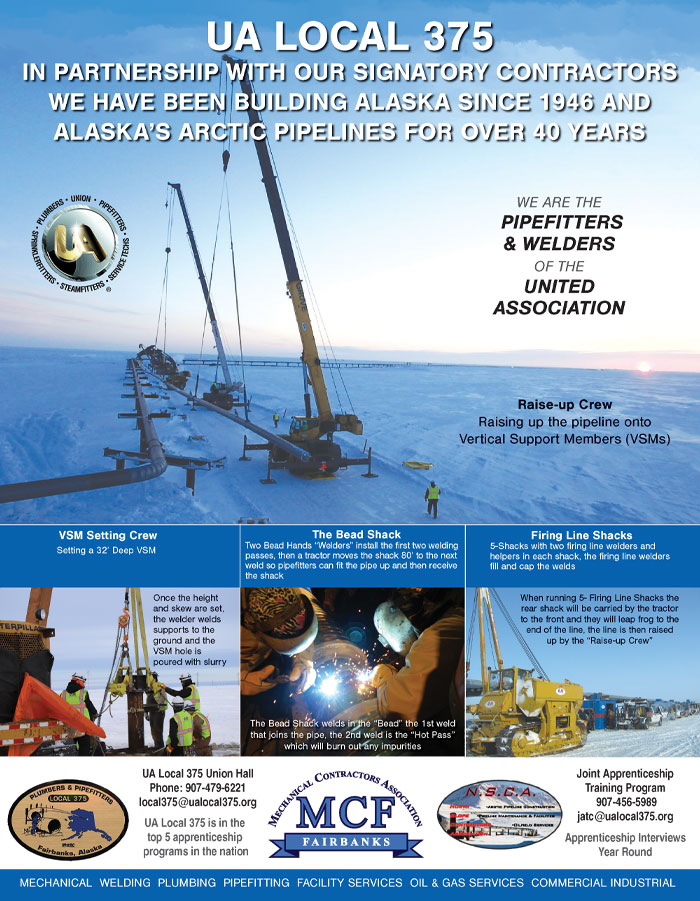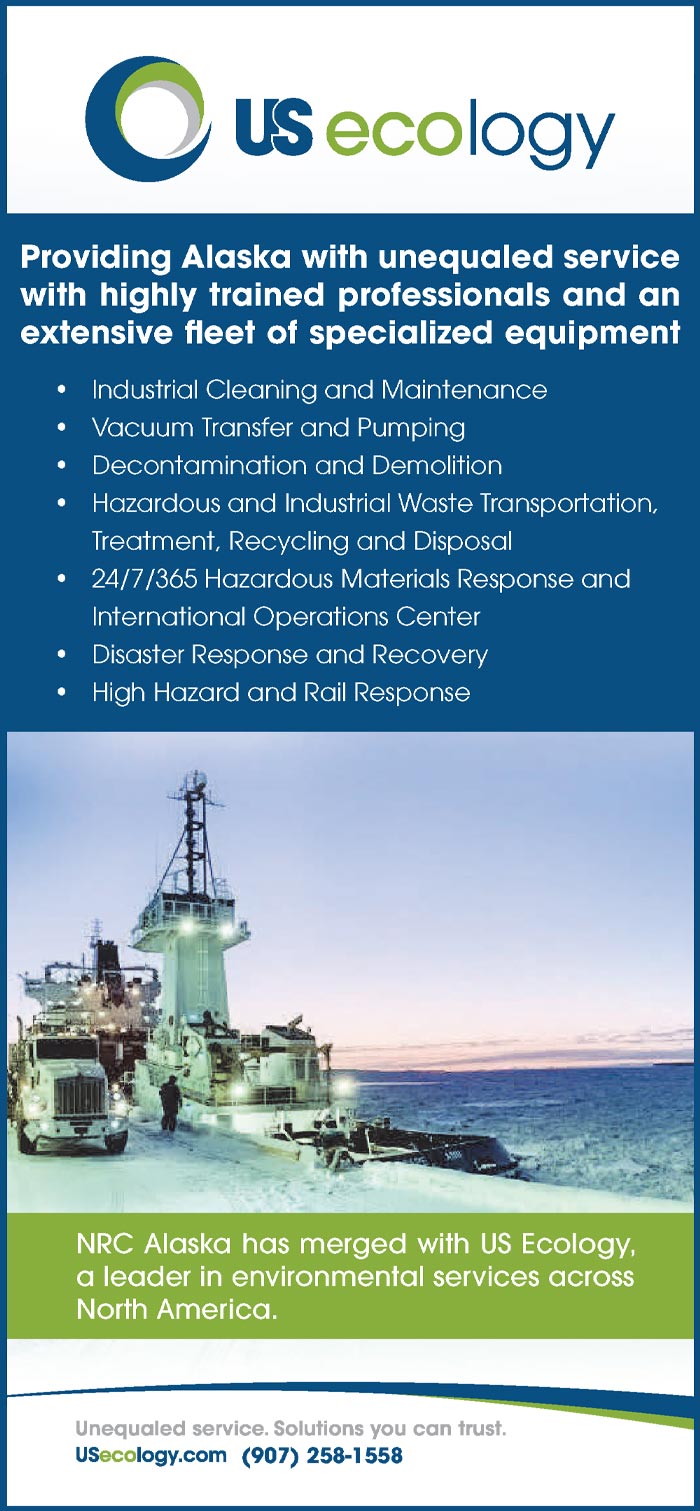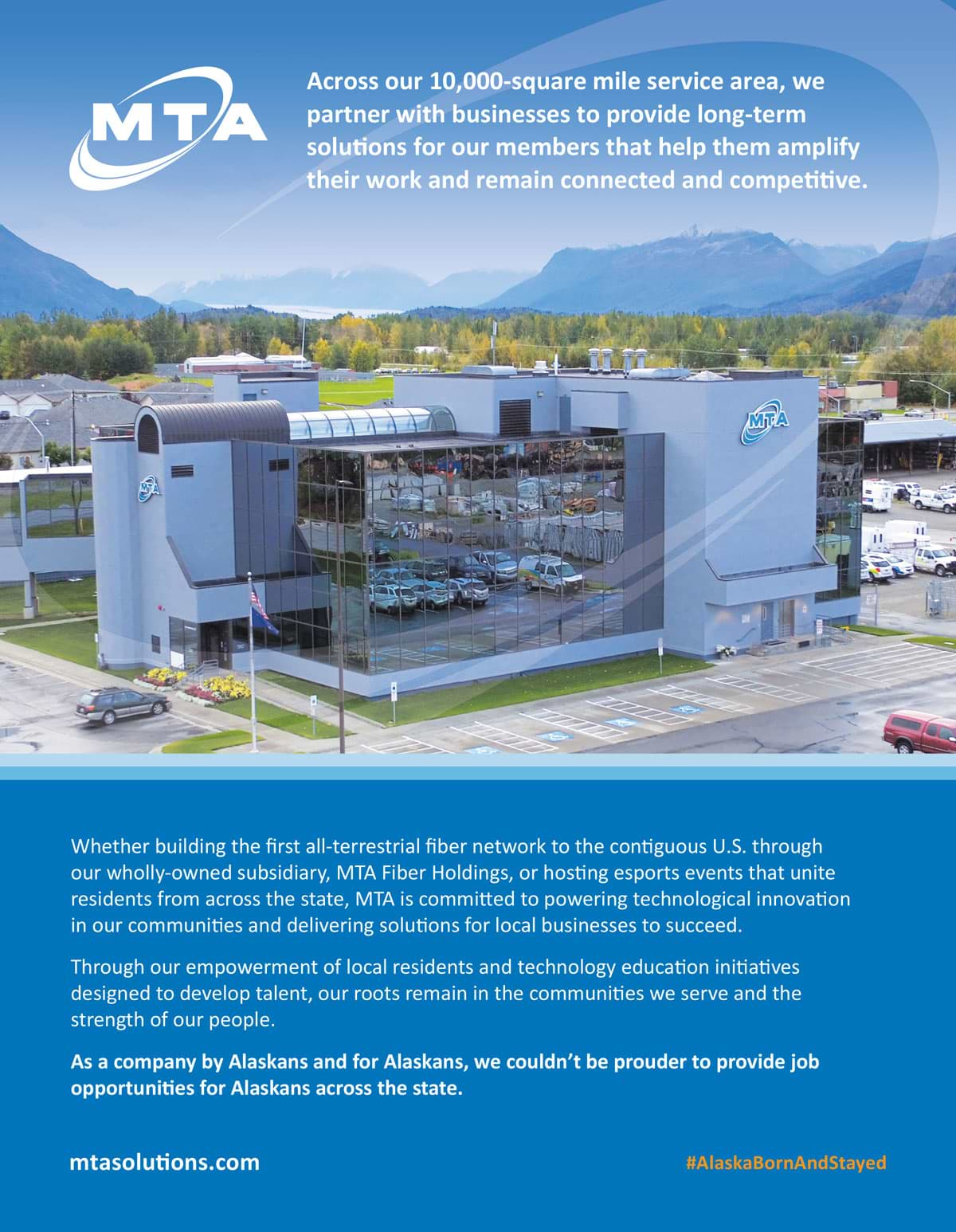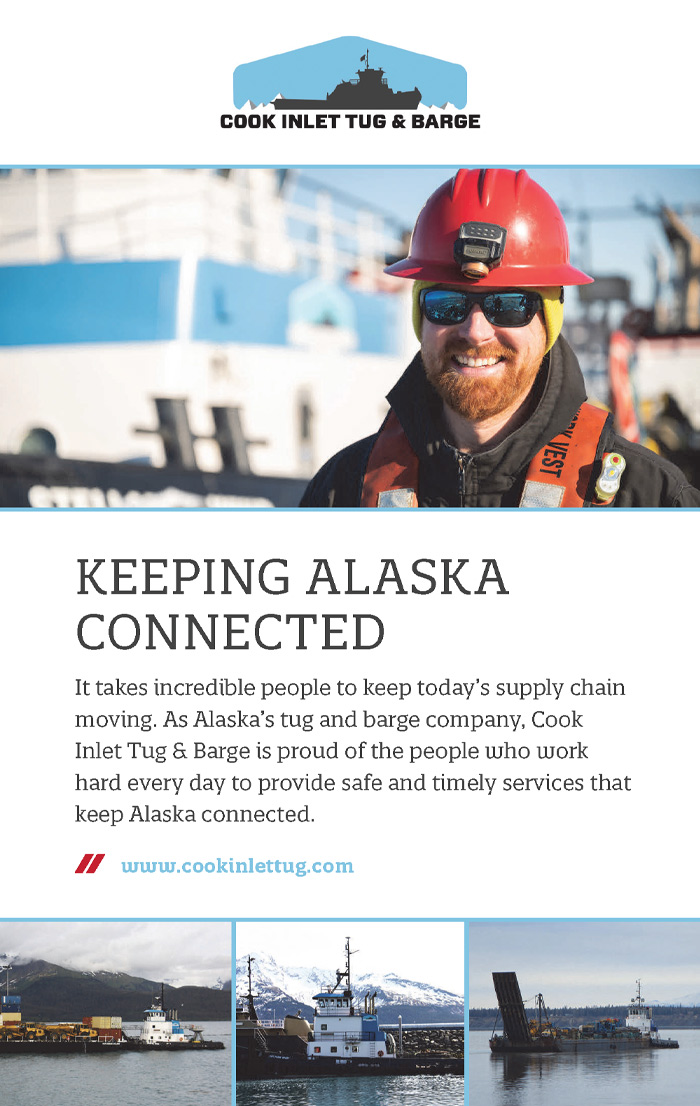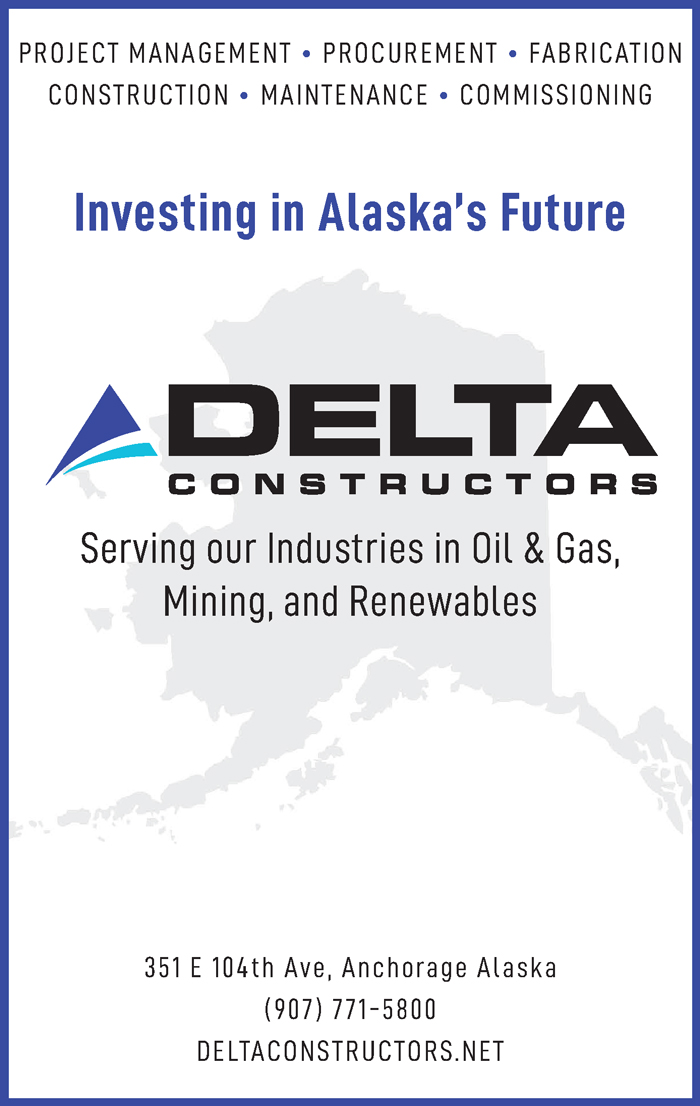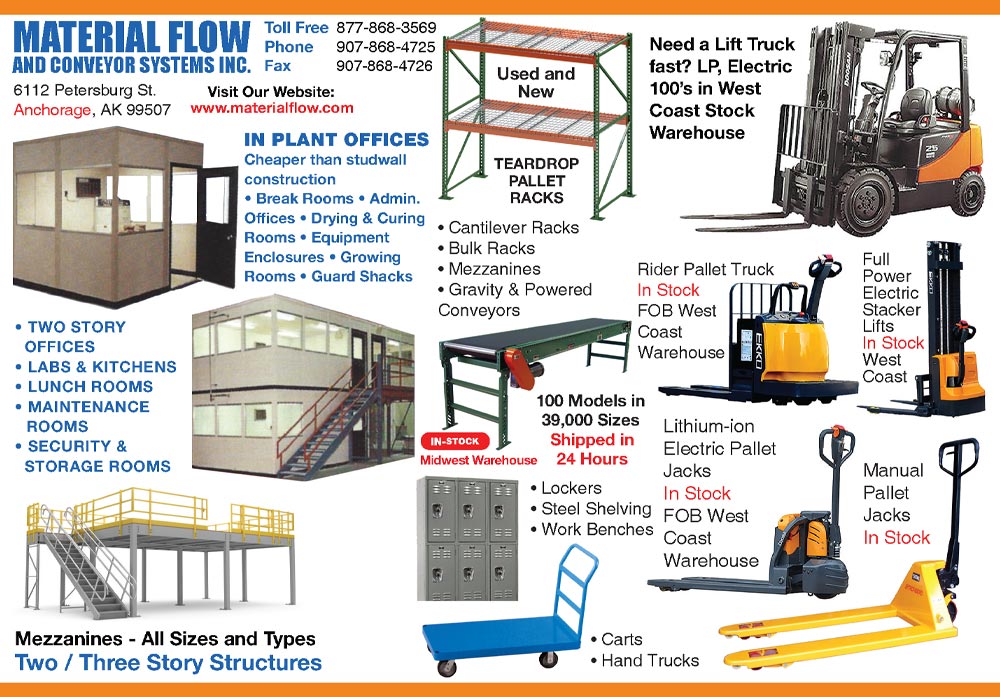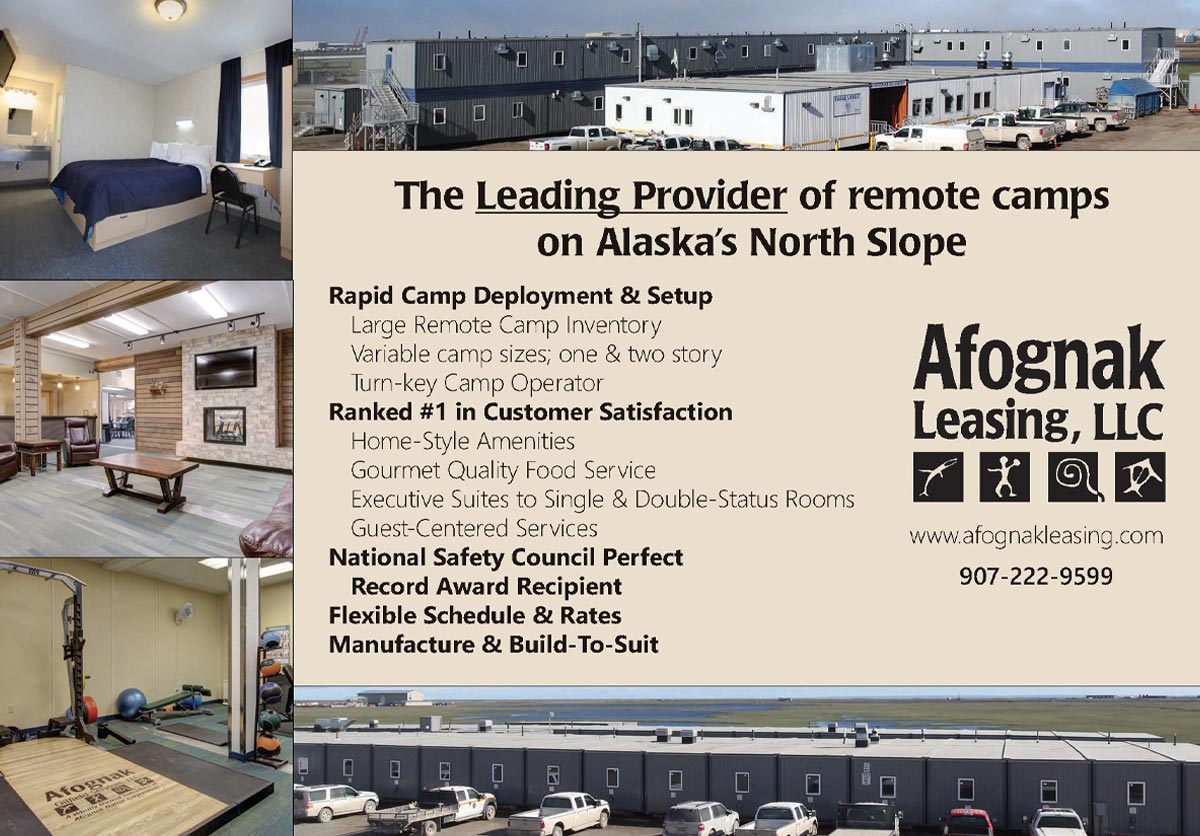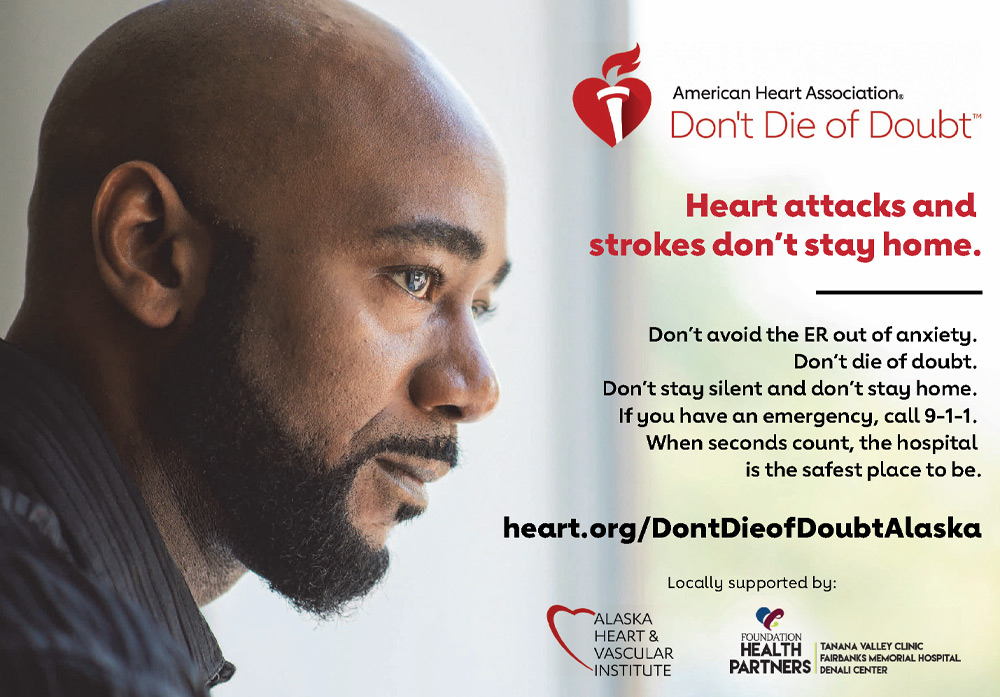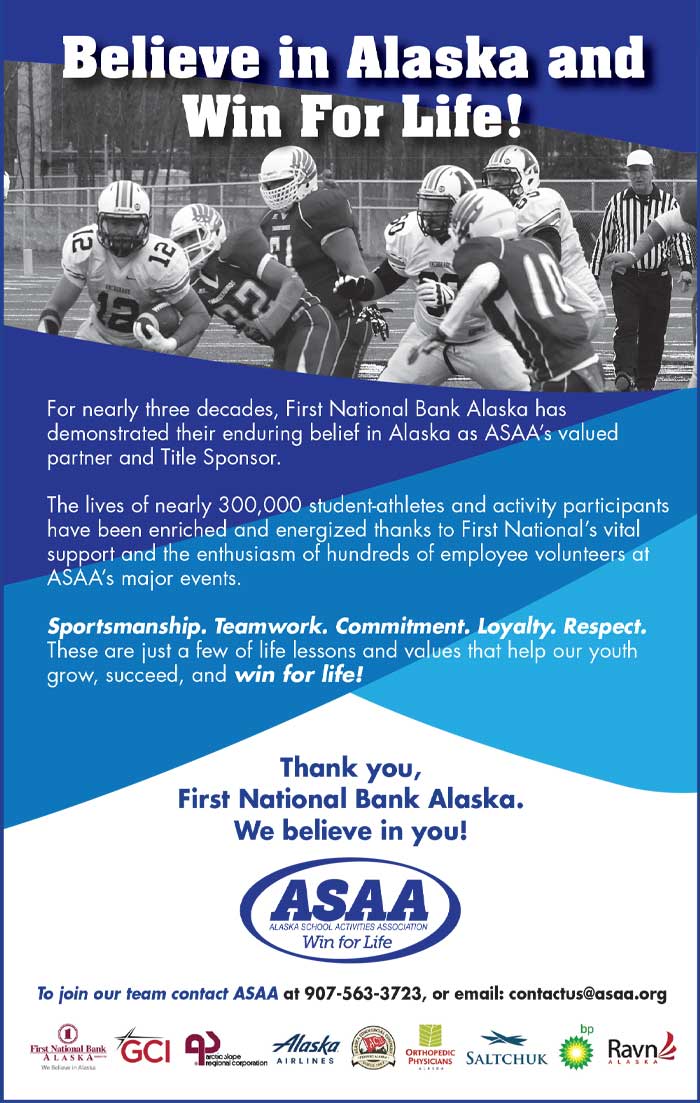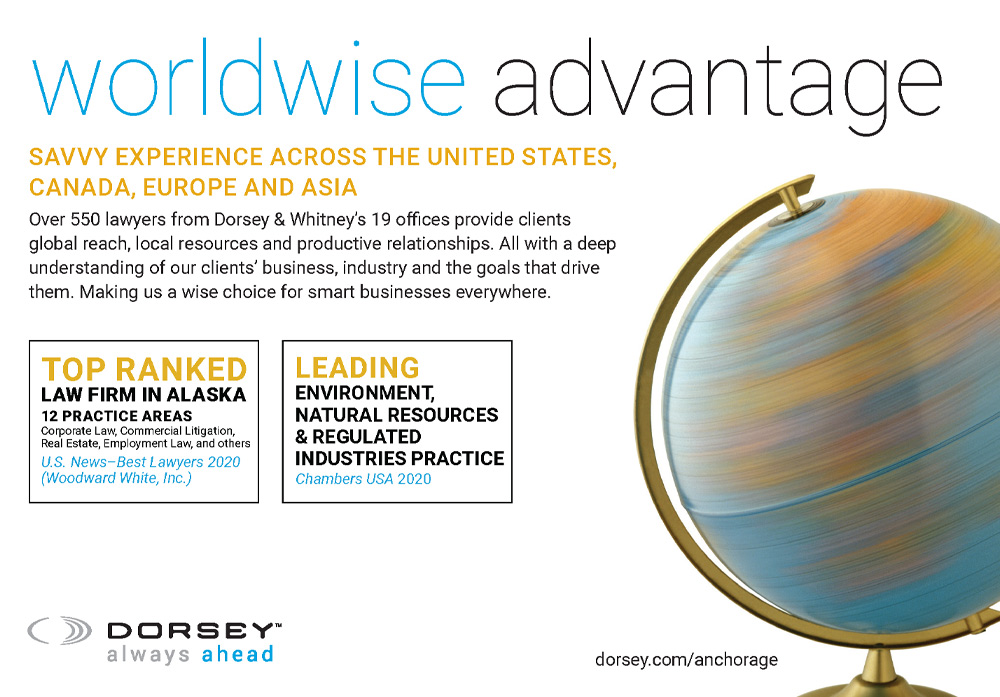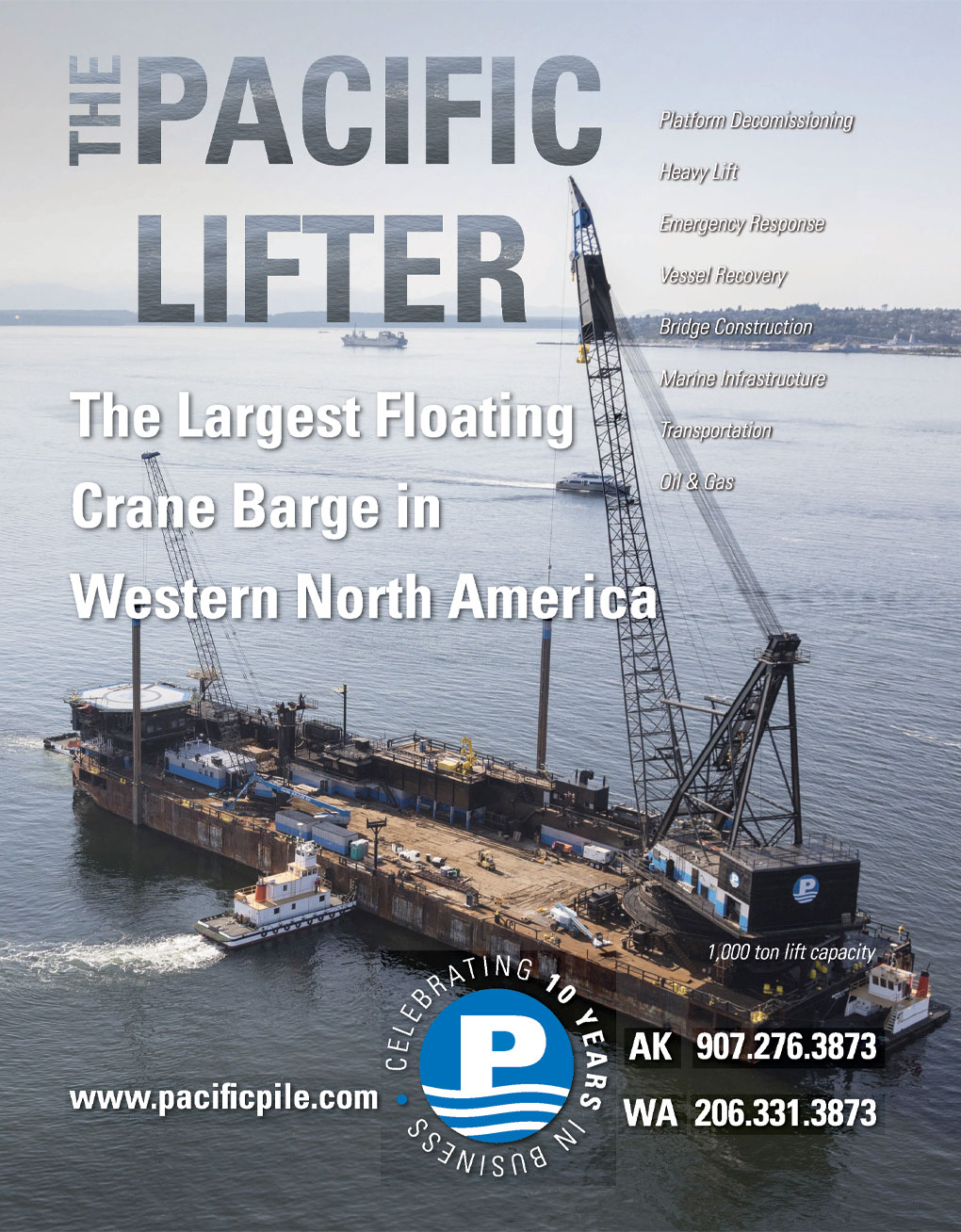

Contents
Features
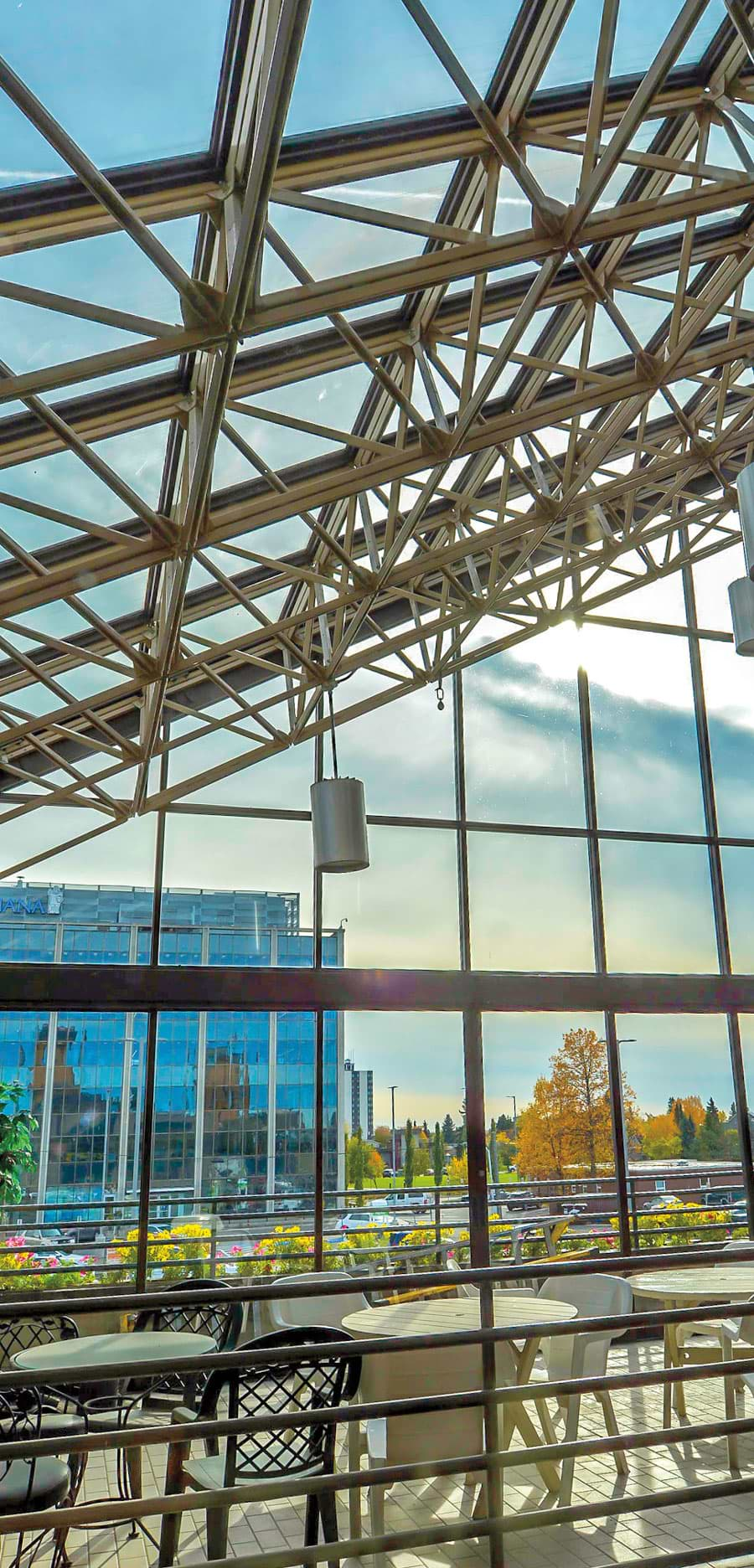
Minimizing Risk, Maximizing Revenue
By Vanessa Orr
By Isaac Stone Simonelli
By Vanessa Orr
By Vanessa Orr

By Isaac Stone Simonelli

Minimizing Risk, Maximizing Revenue
By Vanessa Orr
By Sam Friedman
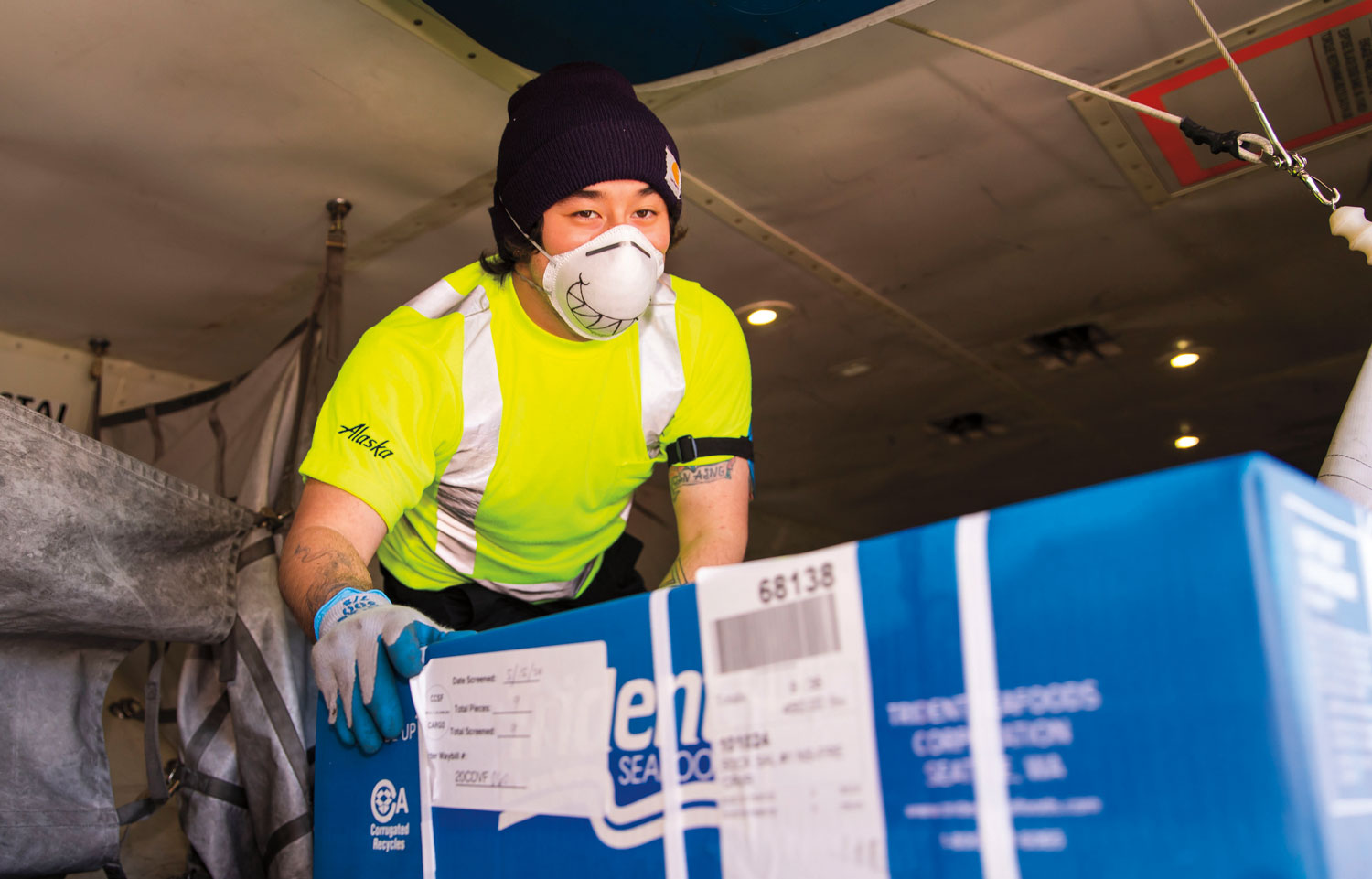
By Sam Friedman
By Danny Kreilkamp
By Tasha Anderson
By Amy Newman
About The Cover
When the Alaska Business editorial team discussed who would best represent the Alaska support services industry, we immediately landed on Rebecca Logan, CEO of The Alaska Support Industry Alliance. Her hard work and passion for promoting Alaska’s support service companies is exactly in step with our desire to highlight those companies in our brand new Industrial Support Services special section.
Through her position at The Alliance, Logan spends her time organizing and presenting information to the Alaska business community through the AK Headlamp; working with individual Alliance members on marketing ideas; and advocating for these companies and the industries they serve. While she always has a view of the big picture, each and every company that contributes to the economy in the Last Frontier is important: “One of my favorite members is a small clothing company down in Kenai who provides product to everybody in Kenai, but also specifically provides clothing products to companies like Hilcorp,” she says.
Cover by Monica Sterchi-Lowman • Photography by Jeremy Cubas
Quick Reads
From the Editor

hen RavnAir Group filed for Chapter 11 bankruptcy protection in April it caused a ripple effect of uncertainty and anxiety that started with the company’s 1,300 employees and extended to thousands of the state’s rural residents. And understandably so—a global pandemic was already threatening rural villages’ food security, and the airline was responsible for transporting everything from groceries and home supplies to mail, freight, and people to villages and towns all over Alaska.
So when RavnAir grounded its entire fleet and ceased operations, many were left wondering… what’s next? COVID-19 was just beginning to wreak havoc on the economy—and the aviation industry was suffering more than most. But it wasn’t long before Alaska’s support system kicked into gear and Grant Aviation and Alaska Air Cargo stepped in to fill some of the service gaps created by RavnAir’s departure.

Kerry Tasker
Billie Martin
press@akbizmag.com
Postmaster:
Send address changes to
Alaska Business
501 W. Northern Lights Blvd. #100
Anchorage, AK 99503

Regulations are changing constantly. For the most up-to-date information visit www.nac.aero.
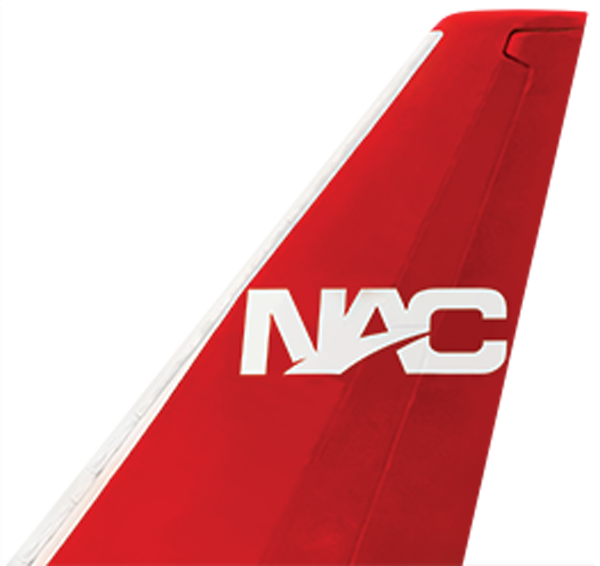
Regulations are changing constantly. For the most up-to-date information visit www.nac.aero.

he University of Alaska (UA) is in the midst of tumultuous times marked by leadership changes, state funding cuts, enrollment declines, and rising costs—not to mention the COVID-19 pandemic, which exacerbated the system’s existing financial problems.
UA’s board of regents has been faced with some tough decisions, including accepting the resignation of UA President Jim Johnsen in June. “The decision regarding a change in leadership was mutual and was made after considerable reflection,” said Board Chair Sheri Buretta in a press release. In mid-July, UA named Pat Pitney as the system’s interim president. Pitney previously worked with UA for 23 years before leaving to serve as the state budget director during then-Governor Bill Walker’s administration. She will lead the university system for the next year or until the board appoints a new president.
However challenging these many recent developments have been for the UA System, it tackles them as they arise with an eye toward the future.
he University of Alaska (UA) is in the midst of tumultuous times marked by leadership changes, state funding cuts, enrollment declines, and rising costs—not to mention the COVID-19 pandemic, which exacerbated the system’s existing financial problems.
UA’s board of regents has been faced with some tough decisions, including accepting the resignation of UA President Jim Johnsen in June. “The decision regarding a change in leadership was mutual and was made after considerable reflection,” said Board Chair Sheri Buretta in a press release. In mid-July, UA named Pat Pitney as the system’s interim president. Pitney previously worked with UA for 23 years before leaving to serve as the state budget director during then-Governor Bill Walker’s administration. She will lead the university system for the next year or until the board appoints a new president.
However challenging these many recent developments have been for the UA System, it tackles them as they arise with an eye toward the future.
wning a building requires a big investment in time and money. Someone has to collect rent, fill vacant spaces, handle maintenance issues, and generally just try to keep the tenants happy—and that’s just the beginning.
“A landlord might not be skilled, trained, or have enough time in order to properly manage a component of the property, such as accounting, prepping for taxes, knowing which vendor to call, managing reserves, maintaining records, or acting as a master negotiator,” explains Kassandra Taggart, the president and broker-in-charge of Real Property Management Last Frontier. “They also need to be available 24/7 in case of emergency and be able to keep up with today’s fast-paced technology environment.”
ith the development of COVID-19, a disease that thrives in and spreads easily through indoor areas, it has become increasingly important for workplaces to provide their workers with good air quality.
Nortech Environmental & Engineering and EHS-Alaska Inc. are just two Alaska businesses working hand-in-hand with their clients to make sure indoor spaces are clean, fresh, and—most importantly—safe for employees to breathe for eight (or more) hours a day.
he editorial team at Alaska Business is happy to present our inaugural Industrial Support Services Special Section. When we were planning the 2020 editorial calendar in 2019, we knew there was some change on the horizon with the introduction of a new special section—we didn’t anticipate that we’d be launching it from our respective home offices. But we took the example of many of the excellent organizations represented in this section and adapted: supporting Alaska’s largest industries requires the ability to accept the circumstances of a project and get the job done anyway.
ere in Alaska—we suffer better than most.
There’s a reason why the people living here are often referred to as the “chosen frozen.” With a notoriously challenging climate and winter that includes nine months of darkness, enduring the Last Frontier requires a special kind of person. The women and men working in some of our most challenging industries are no exception. Fortunately, these individuals can at least rely on having the right tools to accomplish their varied tasks. Without the proper gear, tools, and equipment specifically tailored to meet the demands of working here, Alaskans would struggle, and so too would some of the state’s most important industries.
Companies operating in the support service industry are as diverse as the work itself; these are the retailers, manufacturers, and supply chain-oriented solutions that do business at the intersection of some of Alaska’s most important industries. Industries like aviation, fishing, and oil and gas. The offerings of support service companies adhere to a similar level of variety—with cross-functional products and applications that find homes in more than a single tool kit. Shane Langland and Eagle Enterprises embody such cross-funtionality.
laska seafood takes many different paths to market, but one of the most common paths involves removing fish heads and guts, freezing the fish, and shipping it out of state.
Headed and gutted fish is the single largest category of seafood product produced by Alaska’s fish processors, outstripping more value-added products like fillets, canned fish, and prepared seafood products. Much of the headed and gutted fish is ultimately bound for US markets—but it first travels across the Pacific for secondary processing done mostly in China.


t takes a lot to keep Alaska’s remote worksites running smoothly. Whether it’s transporting goods and materials, maintaining operating equipment, or managing camp quarters, support service companies play an integral role in keeping the mining, oil and gas, and other critical industries open for business.
Perhaps the most vital of these services? Food. Catering camps provide the fuel for a workforce that spends 12-hour days hundreds of miles from home, weeks at a time. Good, hearty food–and lots of it–is what keeps them going.
3909 Arctic Blvd., Ste. 500
Anchorage, AK 99503
afognakleasing.com
jarlington@afognak.com
907-222-9500
2004/ 2004 | 28/28
821 N St., Ste. 201
Anchorage, AK 99501
akexec.com
frontdesk@akexec.com
907-276-5707
1977/1977 | 8/4
121 W. Fireweed Ln., Ste. 120
Anchorage, AK 99503
alaskaminers.org
ama@alaskaminers.org
907-563-9229
1939/1939 | 3/3
121 W. Fireweed Ln., #207
Anchorage, AK 99503
aoga.org
info@aoga.org
907-272-1481
1966/1966 | 4/4
2600 Cordova St., Ste. 105
Anchorage, AK 99503
alaskasafetyalliance.org
info@alaskasafetyalliance.org
907-770-5250
1999/1999 | 6/6
PO Box 220110
Anchorage, AK 99522
arcticenergyalaska.com
gporter@arcticenergyalaska.com
907-382-7772
2012/2012 | 5/3

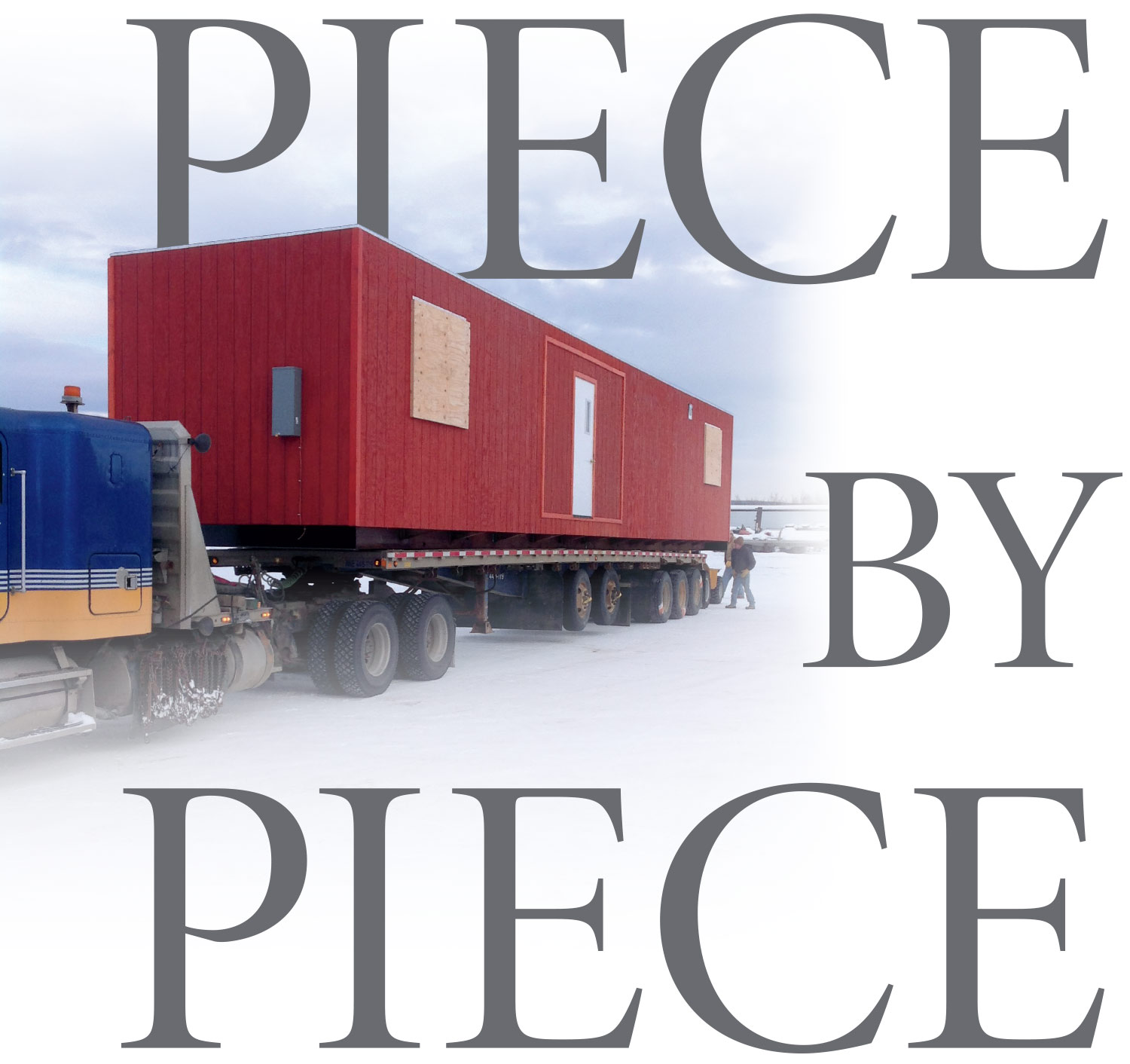
n a state infamous for long, brutal winters and a short building season, it’s the fortunate construction teams who are able to keep busy year-round. From residential projects in Anchorage to remote camps on the North Slope, companies that create modular buildings are some of the fortunate few with the ability to keep at it rain or shine.
“It’s very common for us to be busy building in February; when others lay off all their staff, we’re just kind of plodding along,” Summit Logistics President Michael Repasky says.
Summit Logistics, based out of Fairbanks, has been involved with modular construction since the company was founded in 1982. The business mostly focuses on commercial and industrial spaces rather than retail or residential buildings.
of Aviation
of Aviation
n addition to often prohibitive costs, one of the biggest obstacles to natural resource exploration in Alaska is remoteness. There are no roads on which to transport supplies; the nearest body of water might be miles away, making it nearly impossible to barge in equipment. In many cases, planes and helicopters are the only transport options—and even then, there are any number of obstacles standing in the way of a smooth ride in and out of an exploration site.
“If a helicopter company gets a call, it means they can’t use anything else,” says Ely Woods, general manager of ROTAK Helicopter Services, based out of Anchorage. “We can fit into smaller sites and we have vertical takeoff and landing capabilities—airplanes can’t go where helicopters can.”

Vice President of Sales
he Alaska Business website has undergone a significant transformation over the last two years with richer content, modern design, and endless opportunities to feature Alaska’s businesses and their news. Those of you who have browsed the articles, press releases, events, and other updates at akbizmag.com have likely noticed the Spotlight Digital Profiles. These profiles feature different businesses located in Alaska: they’re beautifully designed, full of information, and promote the professionalism and quality of businesses in our community.
If you are searching for options to increase your online presence in a meaningful way, ask us about scheduling a Spotlight Digital Profile on your business! It is both affordable and effective and will provide you with 24/7/365 online visibility.

iven the combustible composition of the materials extracted and processed in Alaska’s oil and gas industry, robust fire prevention and mitigation systems that go beyond state and federal code are the rule rather than the exception.
“In the oil and gas industry, you have a lot more hazards or potential hazards that are present because of the nature of the processes that are being performed than a typical commercial setting,” explains Richard Harvey, a fire protection engineer with Coffman Engineers.
“If an owner/operator has a facility that they want to operate at low risk, they will implement a lot more protection requirements to help protect their asset and reduce the risk to that asset.”
“We are extremely excited about today’s outcome,” says Dave Pflieger, Ravn’s president and CEO. “While it is truly unfortunate that we can’t restart our RavnAir Connect Part 135 airline, we are hopeful that the Alaska-based buyers of those assets will hire many of our former employees; and we are thrilled to hear that the FLOAT shuttle team intends to rehire as many of our remaining employees as possible and quickly resume flights to the many vital communities Ravn serves throughout our great state.”
RavnAir announced plans to file for bankruptcy after seeing a 90 percent drop in bookings and revenue due to COVID-19.
flyravn.com
 428,658 barrels
428,658 barrels 12% change from previous month
12% change from previous monthSource: Alaska Department of Natural Resources
 $43.09 per barrel
$43.09 per barrel 9.6% change from previous month
9.6% change from previous monthSource: Alaska Department of Natural Resources
 333,087 Labor Force
333,087 Labor Force 12.6% Unemployment
12.6% UnemploymentSource: Alaska Department of Labor and Workforce Development
 Anne Garrett has accepted an offer to lead Special Development Campaigns for Alaska Public Media. Garrett was previously the philanthropy advisor at The Alaska Community Foundation and comes to AKPM with more than twenty years of experience in the nonprofit sector. Garrett is one of just thirty-nine people in the state to earn her Certified Fundraising Executive certification.
Anne Garrett has accepted an offer to lead Special Development Campaigns for Alaska Public Media. Garrett was previously the philanthropy advisor at The Alaska Community Foundation and comes to AKPM with more than twenty years of experience in the nonprofit sector. Garrett is one of just thirty-nine people in the state to earn her Certified Fundraising Executive certification.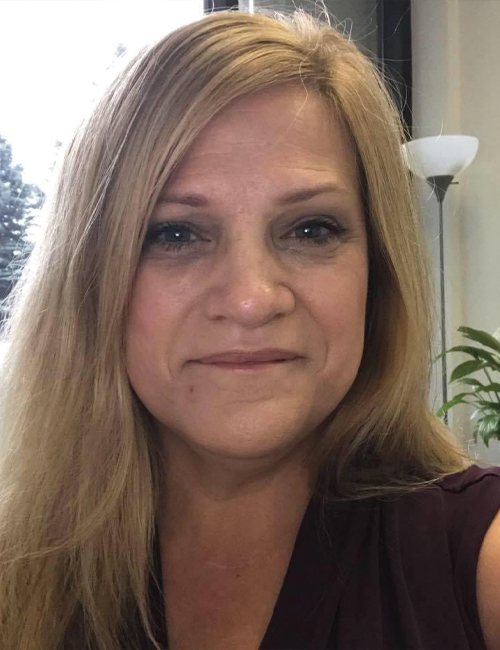
 Alaska Communications named Debra Morse as Vice President of Human Resources. Morse previously served as legal counsel for Alaska Communications, most recently as vice president of legal.
Alaska Communications named Debra Morse as Vice President of Human Resources. Morse previously served as legal counsel for Alaska Communications, most recently as vice president of legal.
Morse provided her leadership as an inaugural member of Alaska Communications’ Women in Leadership Empowerment and Diversity program. She currently serves on the Citizens Advisory Council for Providence Alaska Medical Center.
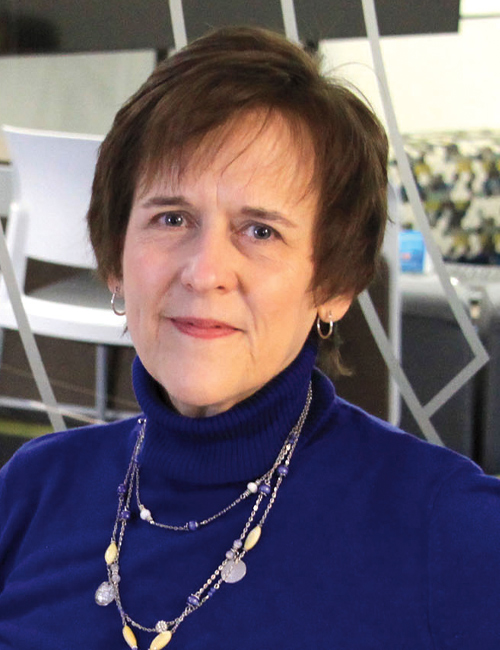
Alaska Trends
At a Glance
Monday Morning Leadership: 8 Mentoring Sessions You Can’t Afford to Miss by David Cottrell.
What movie do you recommend to everyone you know?
I’m a big Braveheart fan; it’s really about heroism and taking on challenges, kind of what we do in construction [he laughs].
What’s the first thing you do when you get home after a long day at work?
If it’s a weekend, we try to get to our lake place in Willow; but we’ve got dogs [black lab Joey and chocolate lab Kya] at home, so normally we try to get the dogs out and run them around.
If you couldn’t live in Alaska, what’s your dream locale?
That’s hard to say because I don’t think there’s any better place in the world than living in Alaska, in my opinion—maybe Hawai’i, on the big island.
If you could domesticate a wild animal, what animal would it be?
That’s a tough question. Maybe a dog, but they’re domesticated enough already.

At a Glance
Monday Morning Leadership: 8 Mentoring Sessions You Can’t Afford to Miss by David Cottrell.
What movie do you recommend to everyone you know?
I’m a big Braveheart fan; it’s really about heroism and taking on challenges, kind of what we do in construction [he laughs].
What’s the first thing you do when you get home after a long day at work?
If it’s a weekend, we try to get to our lake place in Willow; but we’ve got dogs [black lab Joey and chocolate lab Kya] at home, so normally we try to get the dogs out and run them around.
If you couldn’t live in Alaska, what’s your dream locale?
That’s hard to say because I don’t think there’s any better place in the world than living in Alaska, in my opinion—maybe Hawai’i, on the big island.
If you could domesticate a wild animal, what animal would it be?
That’s a tough question. Maybe a dog, but they’re domesticated enough already.
Off the Cuff
an Hall is president of Knik Construction, part of the Lynden family of companies. Hall has been with Knik for twenty-five years. “I was hired on as a grunt, and I think I’m still doing the same job today,” he jokes. Hall says he enjoys working in the construction industry: “Every day is a new challenge… it’s fun working through the challenges that roll in the office. And the people I get to work with and be a part of are a big part of what makes us successful.”



